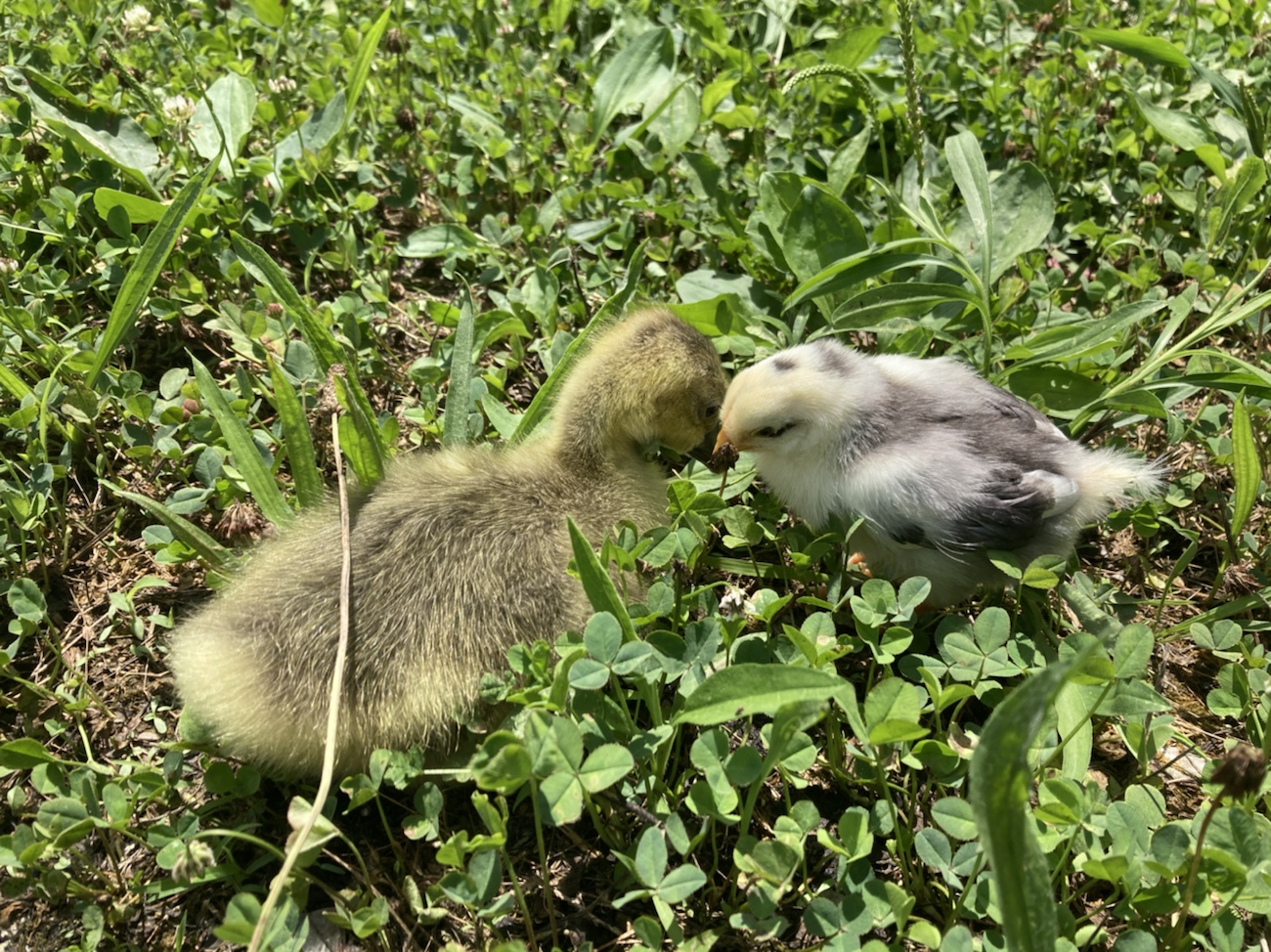
Who says chicks and goslings can’t be fast friends? Despite their obvious differences, these two have shown me just how adaptable baby animals can be…and how important companionship is to their well-being.
As someone who incubates a lot of eggs, I rarely have batches that result in a single hatchling. When I do, I have usually been fortunate enough to have species- and age-appropriate surrogates that can step in and be a pal to the hatchling. But in this case, it simply didn’t work out that way…
It began with two goose eggs making it to lockdown. It’s a terrible place to be, knowing that both eggs must hatch (despite the rigors and challenges of the hatching process) or there will be a very lonely gosling. Because of the risk, I prefer not to set small batches of eggs; however, the geese stopped laying due to molt and I was left with a small number. I chose to take the risk and hope for the best.
On hatching day, one egg contained a gosling that was peeping loudly. At first, I was puzzled by just how loud it sounded, since there was no visible external pip; then, I realized that the pip was on the bottom of the egg, facing the incubator floor. The gosling was strong (and had a good pair of lungs, for sure), a positive sign. After another day, the gosling hatched.
The other egg had moved more prior to hatching day and was slightly sideways in the incubator. I hoped that it, too, would pip and hatch soon. Sadly, though – and despite a “safety hole” made in the air cell after it had internally pipped – the gosling failed to hatch. There are myriad causes for a late-stage death like this, but it always hits hard…the phrase “so close, and yet so far” comes to mind. The gosling was well-formed, but improperly positioned for hatch in the egg – the egg was also rather narrow, which may have contributed to the malposition. It was deeply disappointing, but I reminded myself that there was a healthy gosling that needed to be attended to – and I needed to figure out how to keep it happy without a gosling friend. The cries of a lonely gosling are heart-rending, and I believe that some animals can even die from loneliness. I was determined to prevent another loss from happening.
If it had been an option, I would have preferred to pair the gosling with a young duckling companion, but our ducklings were all too old to be placed with a newly-hatched gosling. There were some older chicks, closer in size, but they’d only been with other chicks since hatch and it just didn’t seem prudent, either, because older chicks can be pecky. That left a small group of chicks that were a few days older. The chicks are Silverudd’s Blue, a lovely, light breed, similar in size to Cream Legbars (which contributed to their genetics). At first, I tried placing two chicks in with the gosling, but the chicks just stuck together, shying away from the gosling. Since that didn’t work, I tried putting one chick – a confident one – in with the gosling by itself. After some noodling by the gosling, which the chick tolerated, and some reciprocal foot-pecking (hey, your feet look like flippers!) by the chick, the two settled down and seemed to be getting along. Worries that the chick was too small and could be accidentally injured by the gosling’s uncoordinated running around were revealed to be unfounded. They cuddled together under their heat source (a Mama Heating Pad with wooly socks to snuggle into) , and the chick (I’m guessing it’s a cockerel by its behavior) began showing the gosling (a goose by coloring) where the food was, excitedly chirping. It seemed like the two would be ok.

It’s been a week since the gosling, Puanani, hatched. Her chick companion, Kalani, is three days older than her. We’ve been taking trips outside for exercise, fresh air, and enrichment. It’s been remarkable watching how having a companion of a different species has shaped each: Pua is gentler with Kalani than she would be with another gosling, as if she knows he’s more delicate; Kalani sprints to keep up with Pua, since she tears around at full speed, and he cries when he can’t see her (and sometimes that’s just because she’s taking a nap under the heating pad), only quieting when he finds her. When Pua nibbles on something, Kalani runs over to see what it is, and to try to sample it, too.
The future for these two holds many unknowns, like will one “outgrow” the other and no longer want to spend time with their friend? Will either be confused about appropriate mates? Will Pua be able to join the gaggle someday, and will Kalani successfully integrate into a flock? Honestly, only time will tell. I’ll try to introduce these two to other fowl as they get older to make future transitions easier, but they may be friends for a long time…and so far, they seem perfectly fine with it.
Note: this post was written several weeks ago, but not published. I re-read it today and decided to finally post it. More timely updates to come!

Comments are closed.